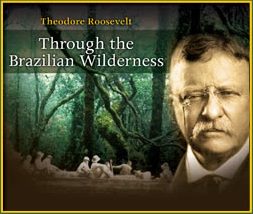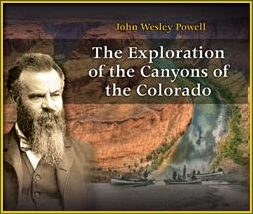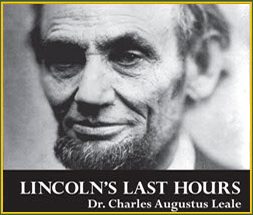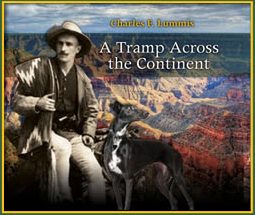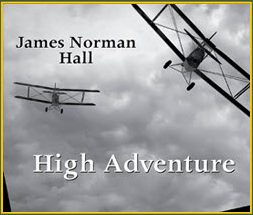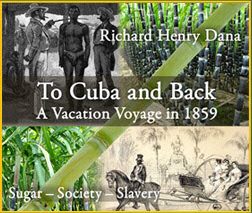Subscribe now to automatically receive our Listen2Read blog:
Listen to Samples From the Audiobooks:
Recent Posts
HOW TITUSVILLE PENNSYLVANIA SAVED THE WHALES
CHRISTMAS ON STORMY SOUTH AFRICAN SEAS WHERE THE WORLD IS STILL FLAT
THE DOOMED MEN OF THE COLORADO RIVER
THE MORNING WHEN PRESIDENT LINCOLN DIED
WHAT HAPPENED TO AMELIA EARHART’S AIRPLANE ‘THE FRIENDSHIP”?
Additional Listen2Read Titles
-
Unabridged
Narrative of the Most Extraordinary and Distressing Shipwreck of the Whale Ship Essex
$14.95 – $29.95 Preview
THE ILLEGAL IMMIGRANT TRAIL THROUGH THE MOST DANGEROUS JUNGLE

Building a border wall between Mexico and the United States is a hot subject these days. Some people regard the border as the beginning of the illegal immigrant trail into the U.S.
 But actually, the border is the end of a long trail for would-be illegal immigrants, I recently discovered. Most have traveled along the Pan American Highway that stretches from Ushuaia, Argentina, to the US border, with one notable, dangerous interruption:
But actually, the border is the end of a long trail for would-be illegal immigrants, I recently discovered. Most have traveled along the Pan American Highway that stretches from Ushuaia, Argentina, to the US border, with one notable, dangerous interruption:
There is no road at all for 60 miles between Turbo, Columbia and Yaviza, Panama. It is an area of Panama named the Darian Gap and some claim it is the most dangerous jungle in the world.

The Darian jungle is a partly unexplored rainforest, filled with crocodiles, killer snakes, vampire bats and insects as big as your hand. The tropical heat can rise to over 90 degrees. It is also home to mosquitos, lots of mosquitos, carrying every disease a mosquito carries, from the Zika Virus and the West Nile Virus to Malaria and Yellow Fever.
There is no road here, because it would be too dangerous to build one.

Environmentalists want the area to remain in its natural state to preserve the ancient jungle growth and wildlife, including Indian life. So do the drug smugglers, terrorists, kidnappers, and Marxist guerrilla fighters. They know there are few marked trails through the wilderness and it is easy to disappear. For some, easy disappearance is a good thing.
Some immigrants, who can afford it, try to avoid the dangerous jungle by traveling around it on the ocean, in the rickety boats with questionable engines offered by the human Coyotes. All payment is in cash. If the engine dies, however, the currents carry the hapless travelers out to sea.
 Other Coyotes offer to be guides through the dangerous jungle, for cash, claiming to know the way. Sometimes they do, but often they abandon their wards. Because of the heavy layer of foliage, satellite direction finders are almost useless. If a guide abandons his party of immigrants, they could be doomed. Travelers often pass dead bodies along the way. If an insect or animal doesn’t bite you, a bullet might.
Other Coyotes offer to be guides through the dangerous jungle, for cash, claiming to know the way. Sometimes they do, but often they abandon their wards. Because of the heavy layer of foliage, satellite direction finders are almost useless. If a guide abandons his party of immigrants, they could be doomed. Travelers often pass dead bodies along the way. If an insect or animal doesn’t bite you, a bullet might.
The immigrants come from all over the world. Many have flown from Asia, Bangladesh and Dubai to Brazil where, apparently, not too many questions are asked.

Once on the South American Continent, immigrants find their way to the Pan American Highway heading North, with little or no governmental interference, moving from one country to another.
Eventually, they arrive at the mountainous, yet swampy Darian Jungle between Colombia and Panama that one immigrant called the greenest place he’d ever seen. At this point, the journey becomes more difficult and treacherous than anyone could imagine. Many immigrants have said that had they known how difficult it would be, they would have tried to immigrate to Europe instead.

This part of Central America is continuing to play its long historic role in our United States history. Panama has the narrowest landmass between the Pacific Ocean and the Caribbean Sea. Before the US continental railroad was completed in 1869, traveling across this area was the shortest route from the West to the East. But it was always been risky. And, with all the progress resulting from the building of the Panama Canal, travel by foot through the primal jungle remains as dangerous as it has always been.

Adventurer William Lewis Manly trekked North of the Darian jungle, along the Chagres River, in the early 1850’s, crossing from West to East. Manly had been successful mining for gold in California during the gold rush of 1849. He discovered and mined enough gold to enable him to return East and establish a farm, as he wrote in his book ” Death Valley in ‘49”. Preview: https://listen2read.com/death-valley-in-49/
In William Lewis Manly’s day, crossing Panama on foot was the only practical way to travel from California to the Eastern United States. To return home with his gold, Manly booked passage on a clipper ship from San Francisco Bay to Panama. Once Manly landed in Panama City, he had to hike through the jungle, 48 miles to the Caribbean side, where a passenger ship bound for Havana and New Orleans was expected. His entire fortune was wrapped in a gold belt tied tight around his waist.
“We had very little to eat. We kept a sharp eye out for robbers, keeping together as much as we could, for we knew that all returning Californians would be suspected of having money. Most all of them were ready for war, except myself, who had no weapon of any kind. All of these people had a bad name and all of them carried a long bladed knife called a Machete, with which they could kill a man with a single blow.”

Every immigrant who crosses this area today is just as nervous as Manly was in the 1850’s. Everyone knows that what they are doing is high risk, with strong odds of failure. An immigrant named Ahmed Hassan told a reporter for the Wall Street Journal, “There was no water. There were snakes. I thought I might die in the jungle.”
Immigrants to the US arrive at this point because it is easy for them to pass through as many as six South American countries without being stopped. Only recently, has Panama begun returning would-be immigrants caught in the Darian Gap to Colombia.

Those who are able to pass through Panama without being deported must then pass through five more countries before they reach that much talked about fence on the United States border. At that point, eleven sovereign nations in South and Central America have allowed the immigrants to pass through their jurisdiction toward the United States without stopping them. I guess the US State Department doesn’t know about this.
Andre Stojka
Publisher
Listen To Read
Audiobooks
© Listen2Read.com
Additional Listen2Read Titles
-
Unabridged
Narrative of the Most Extraordinary and Distressing Shipwreck of the Whale Ship Essex
$14.95 – $29.95 Preview



